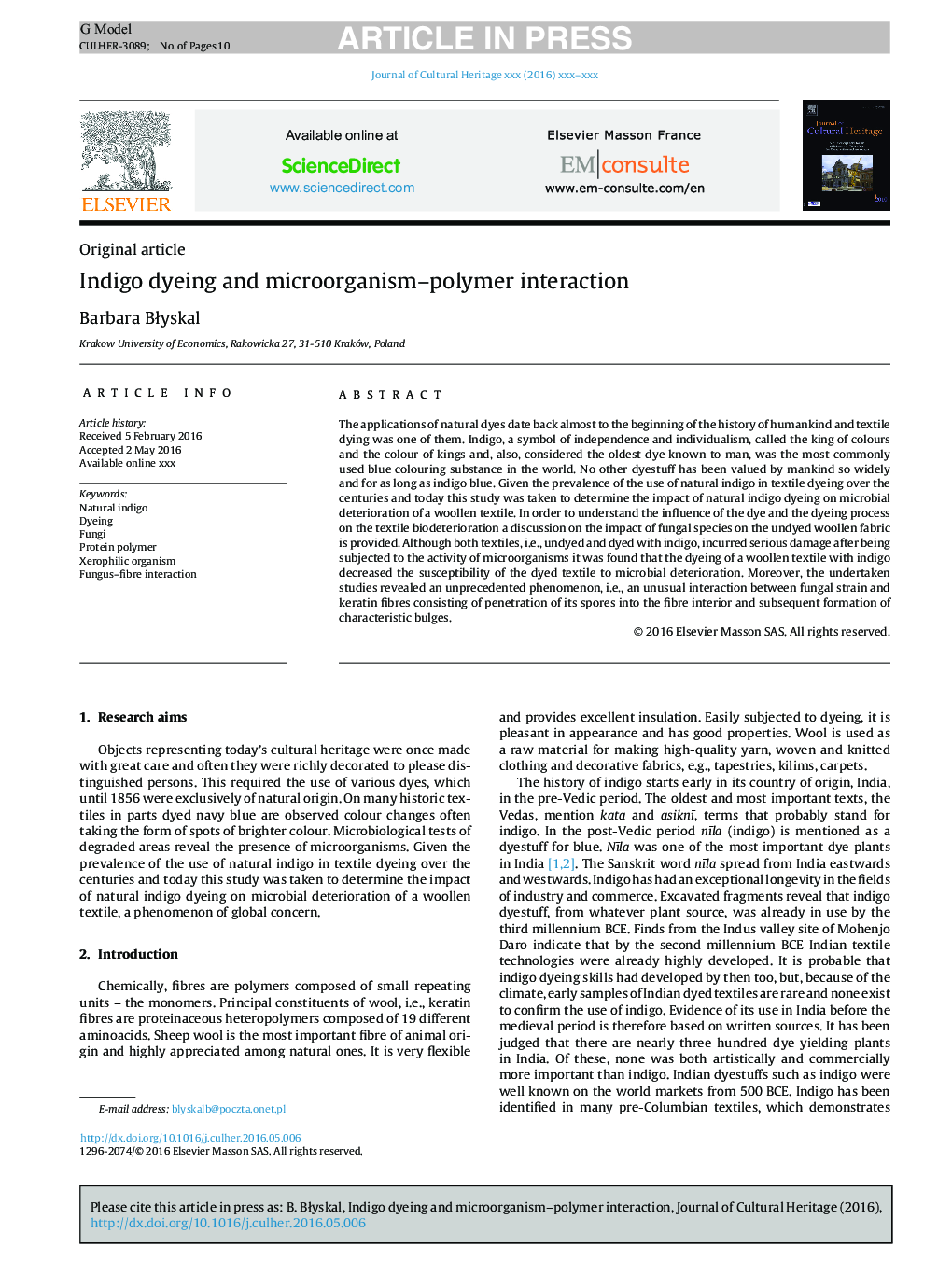| Article ID | Journal | Published Year | Pages | File Type |
|---|---|---|---|---|
| 5112696 | Journal of Cultural Heritage | 2016 | 10 Pages |
Abstract
The applications of natural dyes date back almost to the beginning of the history of humankind and textile dying was one of them. Indigo, a symbol of independence and individualism, called the king of colours and the colour of kings and, also, considered the oldest dye known to man, was the most commonly used blue colouring substance in the world. No other dyestuff has been valued by mankind so widely and for as long as indigo blue. Given the prevalence of the use of natural indigo in textile dyeing over the centuries and today this study was taken to determine the impact of natural indigo dyeing on microbial deterioration of a woollen textile. In order to understand the influence of the dye and the dyeing process on the textile biodeterioration a discussion on the impact of fungal species on the undyed woollen fabric is provided. Although both textiles, i.e., undyed and dyed with indigo, incurred serious damage after being subjected to the activity of microorganisms it was found that the dyeing of a woollen textile with indigo decreased the susceptibility of the dyed textile to microbial deterioration. Moreover, the undertaken studies revealed an unprecedented phenomenon, i.e., an unusual interaction between fungal strain and keratin fibres consisting of penetration of its spores into the fibre interior and subsequent formation of characteristic bulges.
Keywords
Related Topics
Physical Sciences and Engineering
Chemistry
Physical and Theoretical Chemistry
Authors
Barbara BÅyskal,
